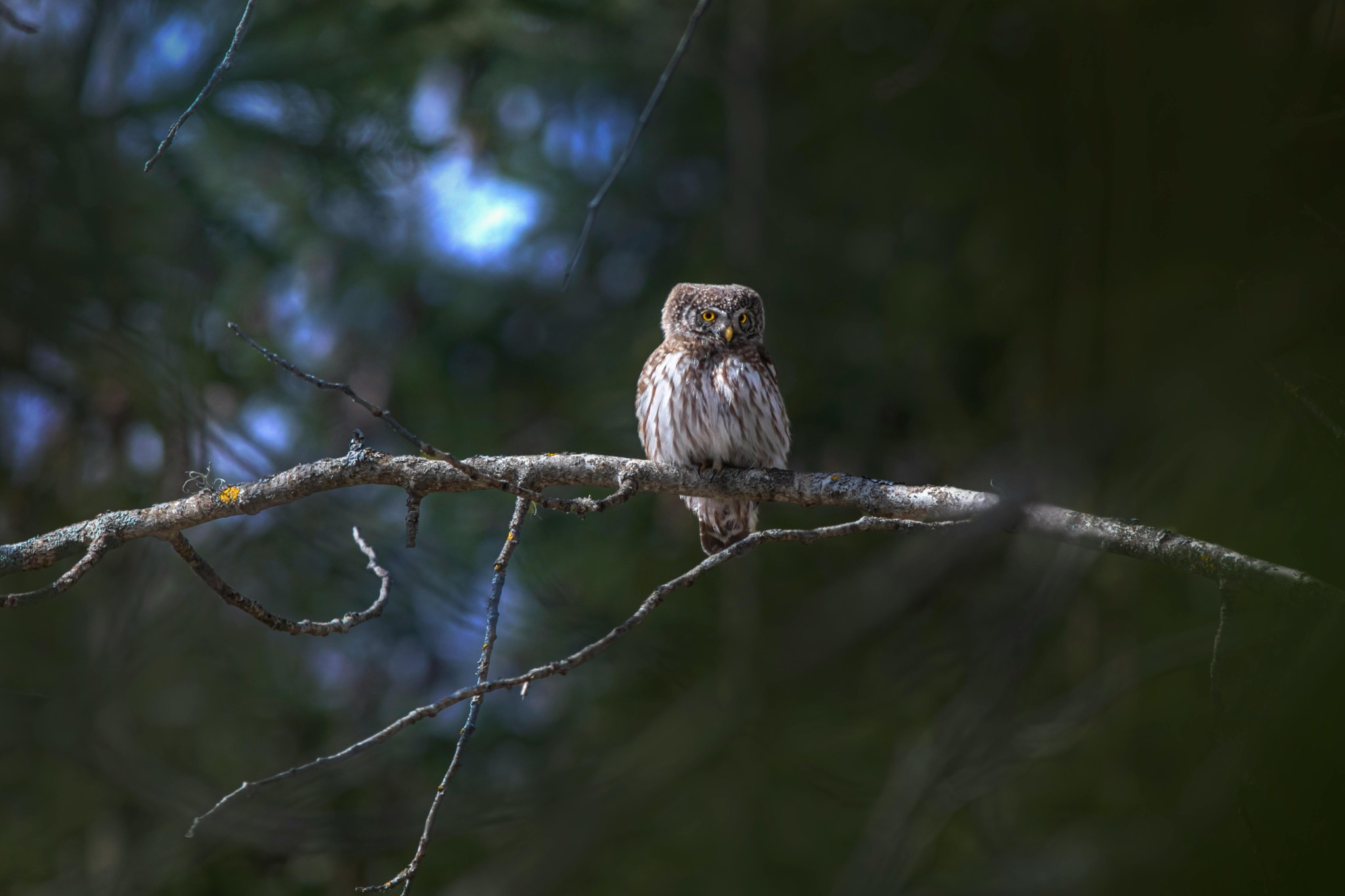The Eurasian Pygmy Owl (Glaucidium passerinum) is the smallest owl species found in Europe. Despite its diminutive size, this owl is a formidable hunter. Here are some detailed features and characteristics of the Eurasian Pygmy Owl:
Appearance
- Size: The Eurasian Pygmy Owl measures about 15-19 centimeters in length and has a wingspan of 32-39 centimeters. It typically weighs between 50 and 80 grams.
- Coloration: The plumage is predominantly brown with white spots on the crown and a finely spotted back. The underparts are white with brown streaks.
- Eyes: They have striking yellow eyes, which are characteristic of many owl species. The facial disc is not as pronounced as in other owl species.
- Bill: The bill is yellowish and relatively small, suited to their small prey.
Habitat
- Preferred Habitats: Eurasian Pygmy Owls prefer coniferous and mixed forests, often with a good mix of dense thickets and open spaces. They are typically found in mountainous and hilly regions.
- Geographic Range: Their range extends across northern and central Europe and into northern Asia, from Scandinavia to Siberia.
Behavior
- Hunting: They are diurnal and crepuscular hunters, meaning they are active during the day and at twilight. Their diet mainly consists of small birds and mammals, but they will also eat insects and other small prey.
- Hunting Techniques: They often hunt from a perch, waiting to spot their prey before swooping down to catch it with their sharp talons.
- Vocalization: Their call is a series of high-pitched, whistling notes that can be heard over long distances, especially during the breeding season.
Reproduction
- Nesting: They typically nest in old woodpecker holes or natural tree cavities. They do not build their own nests but will sometimes use artificial nest boxes.
- Eggs: Females lay between 3 to 7 eggs per clutch, usually in late spring. The eggs are incubated for about 28 days.
- Chick Development: The chicks fledge about 4 weeks after hatching, but they remain dependent on their parents for several weeks after leaving the nest.
Conservation Status
- The Eurasian Pygmy Owl is currently listed as Least Concern by the IUCN. However, habitat destruction and deforestation can pose threats to local populations.
Interesting Facts
- Size Misconception: Despite being the smallest owl in Europe, the Eurasian Pygmy Owl is a skilled predator and can take down prey almost as large as itself.
- Adaptability: These owls are highly adaptable and can live in a variety of forest types, though they prefer older forests with plenty of nesting sites.
- Seasonal Behavior: In winter, they often store surplus prey in tree cavities to ensure a steady food supply during colder months when prey is scarcer.
Identifying Glaucidium passerinum
- Distinctive Features: The small size, brown and white plumage, and yellow eyes are key identifiers. Their high-pitched calls and diurnal hunting behavior also help in identification.
- Behavioral Traits: Watching for their characteristic hunting perches and listening for their distinctive calls can aid in locating these elusive owls.
In summary, the Eurasian Pygmy Owl (Glaucidium passerinum) is a small but effective predator found across northern and central Europe and northern Asia. Its distinctive appearance, diurnal hunting habits, and adaptation to forested habitats make it a fascinating species within its range. Despite its small size, it plays a significant role in the ecosystem as a predator of small birds and mammals.
Visited 889 times, 3 visit(s) today
Views: 1551
Subscribe to the newsletter:
